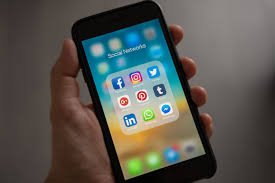When developing a mobile app, one of the first decisions you’ll need to make is which platform to target: Android or iOS. Each platform offers unique advantages and challenges, and understanding the differences can help you make an informed decision that aligns with your business goals, target audience, and resources.
In this article, we’ll compare Android and iOS on several key factors, such as market share, user demographics, development costs, and app performance. By the end, you’ll have a clearer picture of which platform is better suited for your mobile app.
1. Market Share and Audience Reach
One of the most important factors to consider when choosing between Android and iOS is the market share and audience reach of each platform.
- Android: Android is the dominant mobile operating system globally, with a market share of around 70% as of 2024. It is particularly strong in emerging markets, such as Asia, Africa, and Latin America, where Android devices are more affordable. If your goal is to reach a larger and more diverse global audience, Android is a great choice.
- iOS: While iOS has a smaller market share (around 25% globally), it is more concentrated in high-income markets, such as North America, Western Europe, and parts of Asia. iOS users are generally more affluent and tend to spend more on apps and in-app purchases. If your target audience is based in wealthier regions or you’re focusing on premium users, iOS may be the better option.
2. App Store Revenue and Monetization
Monetizing your app is a critical consideration when choosing a platform. Both the Google Play Store (for Android) and the Apple App Store (for iOS) offer different monetization opportunities.
- Android: The Google Play Store has a larger volume of apps, but it generally sees lower revenue per user compared to iOS. Android users are more likely to use free apps, and the platform has a higher rate of app piracy. However, Android offers more flexibility in terms of pricing models and app distribution channels (e.g., third-party app stores).
- iOS: iOS is known for having higher revenue per user, especially in terms of in-app purchases and subscriptions. Apple’s App Store offers a more controlled and secure environment, which contributes to higher customer spending. Additionally, Apple has a more stringent app review process, which ensures that only high-quality apps are published, potentially improving the overall user experience.
3. Development Costs and Time
The cost of developing an app can vary significantly depending on the platform. When considering development costs, it’s essential to take into account both the initial development and ongoing maintenance.
- Android: Android development typically takes longer due to the large variety of devices with different screen sizes, resolutions, and hardware configurations. This can increase both development time and costs. Additionally, Android requires developers to account for fragmentation, which can make testing and optimization more complex. However, Android development generally offers a lower initial cost for app publishing since the Google Play Store charges a one-time fee of $25 for registration.
- iOS: iOS development tends to be quicker and more streamlined because Apple has a smaller range of devices with consistent hardware and software specifications. This can reduce development time and make it easier to test and optimize the app. However, iOS app development costs are typically higher, as Apple’s developer program costs $99 per year, and the app approval process is more stringent. On the plus side, the quality control enforced by Apple often results in a higher-quality user experience.
4. User Engagement and Retention
When it comes to user engagement and retention, iOS users tend to outperform Android users in several key areas.
- Android: While Android has a larger user base, the platform experiences higher user churn rates. Android users are often more price-sensitive and may uninstall apps more frequently. However, Android users are more likely to engage with apps that offer free content or freemium models.
- iOS: iOS users are generally more loyal, with lower churn rates. iPhone users tend to download more apps and spend more time using them. iOS also has a higher retention rate, particularly for apps that offer paid content, subscriptions, or premium features. As a result, iOS apps tend to have better long-term user engagement and retention.
5. Customization and App Flexibility
Both Android and iOS offer flexibility in app design and features, but they differ in terms of customization and control.
- Android: Android offers more freedom for customization, allowing developers to create highly tailored apps. Android’s open-source nature gives developers access to system-level features, such as widgets, background services, and more. Additionally, Android allows apps to be distributed outside of the Google Play Store, which can increase flexibility but also introduces security risks.
- iOS: While iOS offers less flexibility in terms of customization compared to Android, it has a more consistent and controlled environment. Apple’s App Store guidelines ensure that all apps meet certain quality standards, leading to a smoother and more predictable user experience. Developers have access to powerful tools for creating polished, high-performance apps, but customization is limited to the boundaries set by Apple.
6. Security and Privacy
Security is a top priority for both Android and iOS, but the two platforms take different approaches.
- Android: While Android has improved its security over the years, the platform remains more vulnerable due to its open-source nature and the ability to install apps from third-party sources. This increases the risk of malware, especially on low-cost devices. However, Google has made strides in improving security with regular updates and the Google Play Protect feature.
- iOS: iOS is widely regarded as more secure and privacy-focused due to its closed ecosystem. Apple controls the app distribution process, making it harder for malicious apps to enter the App Store. iOS also offers advanced privacy features, such as App Tracking Transparency, which gives users more control over their data. iPhone users tend to feel more confident about the security of their devices, which can translate into higher user trust.
7. App Performance and User Experience
App performance plays a critical role in user satisfaction and retention. Both platforms offer excellent performance, but there are some key differences.
- Android: Due to the wide variety of Android devices, app performance can vary significantly depending on the hardware. Apps may perform better on higher-end Android devices, but older or budget models may experience slower speeds and crashes. Developers need to test and optimize apps for a wide range of devices, which can be challenging.
- iOS: iOS devices are more standardized, which means that apps can be optimized more effectively across all iPhones and iPads. As a result, iOS apps generally offer a smoother, more consistent user experience. Apple’s control over both hardware and software allows for better performance optimization and faster software updates.
8. The Verdict: Which Platform is Better for Your Mobile App?
Choosing between Android and iOS ultimately depends on your business goals, target audience, and budget.
- Choose Android if:
- You want to reach a larger global audience, especially in emerging markets.
- You have a smaller budget and need to keep development costs low.
- You need more flexibility and customization options for your app.
- You are targeting a diverse group of users with varying device types.
- Choose iOS if:
- Your target audience is in high-income regions, such as North America or Western Europe.
- You want to focus on premium users who are more likely to spend on apps.
- You prefer a streamlined development process with higher user engagement and retention.
- Security, privacy, and app quality control are top priorities for your app.
In many cases, businesses choose to develop for both platforms to maximize their reach, but understanding the strengths and weaknesses of each platform will help you make an informed decision based on your unique needs.
Key Takeaways:
- Android offers a larger user base and more customization, while iOS provides higher user engagement and security.
- Android is great for emerging markets, while iOS is ideal for premium users in affluent regions.
- Consider development costs, app performance, and security when choosing your platform.
- In many cases, developing for both Android and iOS may be the best strategy to reach a wider audience.
Moz is a seasoned Digital Marketing and UI/UX Strategist, Trainer, Speaker, and Senior Technical Content Writer at Techingenious. With over 15 years of experience, he has helped brands across Dubai, the UK, the US, Canada, and India craft impactful digital strategies and user experiences. Moz is known for bridging the gap between technical depth and creative execution, delivering results-driven content and SEO service solutions. Whether on stage or on screen, his passion for innovation, technology, and education continues to inspire professionals and businesses alike.




